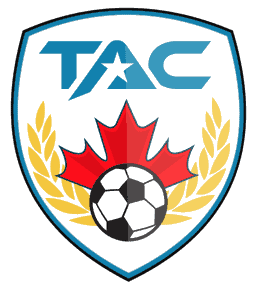Goal setting is essential for kids because it gives them a sense of purpose and paves a path for them to follow. It also helps them grow as a person as they continue to set bigger goals for themselves and achieve them. On top of that, it helps their self-confidence grow as they see more success when they continue to achieve these goals. However, the question for children may arise: how do they set goals? This blog will answer that question and outline the steps your kids should follow to set goals. Below we will highlight the four stages your kids should follow and how you can help your kids set goals.
Step 1: Let Kids Set Goals For Themselves
Overall the first step to learning how to set goals is getting your children to create plans for themselves that they want to achieve, so they are more motivated to achieve them. Children will be more driven or have more motivation to achieve a goal if they are setting it for themselves. This is because they understand their interests best, so they will be more motivated if they set a goal within something they are interested in. Instead of pushing your children to set goals that you want them to achieve, help them realize something they genuinely want to achieve. Ask them questions such as ” what is something you wish you could achieve?” and “What’s something you would feel very proud to overcome?” Asking them questions like this will help them realize something they aspire to achieve. Help your children brainstorm one big goal that is a SMART (Specific, Measurable, attainable, goal so their success can be measured. Help them avoid setting more broad goals; they need to be able to recognize the progress they are making towards their goal. Overall this step is very important and allows your children to think for themselves, which is a great place trying to help your children set goals
Step 2: Discuss The Purpose Of Your Child’s Goals
For children to want to pursue their goals, they need to understand the purpose of the plan or why it matters. For children to understand the motivation behind the goal they are setting, they need to know why they are developing it. Children who see a sense of purpose tend to perform better from an educational standpoint. Studies from 2014 found this especially true when students have a self-transcendent state of purpose. Children are more successful when they understand how their learning can benefit others. So help your child understand their goals by asking how they help others. Understanding this or grasping the longer-term impacts of their goal will make them more motivated to achieve this goal they have set for themselves. This step allows the child to understand the deeper meaning behind their goals, you can assist them with this to help your children set goals for themselves.
Step 3: Break Down Their Bigger Goals Into Smaller Steps
A practical larger goal for a child should not be too challenging or accessible for them to achieve. It must be within reach and reasonable for your children to achieve for them to keep their motivation to strive towards this goal. The best way to help your child maintain motivation for their long-term goals is to help them break it down into smaller steps. It can be helpful for your children to set smaller incremental goals that are more challenging for them as a step toward achieving their overall goal. This is beneficial because total goals help your children stay motivated and continue improving the skills needed to perform their overall goals. It also helps increase their confidence as they gain smaller goals to achieve their overall goal. On top of this, it helps kids that they might not achieve their goals right away, but it showcases that they are still progressing toward obtaining their long-term goals. This step allows children to see the bigger picture and realize what they need to achieve to accomplish their large goal; breaking it down with them makes it easier for you to help your children set goals.
Step 4: Help Them Think Of Potential Obstacles
If there is no plan to overcome any unforeseen obstacles or challenges, it might decrease your child’s motivation to achieve their overall goal. This is because the way your child set and planned this goal did not include any external challenges, so when they happen, they will not know how to overcome them. Brainstorm with your child to think about the possible roadblocks that could lead to them achieving their long-term goal. This way, they will understand that not everything might go as planned, and they will be able to overcome and adapt to any foreseen or unforeseen challenges that come their way. This will help them stay motivated and dedicated to achieving the goal they set for themselves. This step allows your children to account for any problems they might encounter; brainstorming foreseen issues with them is a great way to help your children set goals.
Leadership and Goal Programs At TAC Sports
TAC Sports has incredible leadership programs for teenagers aged 13 -16. These programs teach the kids outstanding leadership, self-development, public speaking, and more. The program also focuses on goal setting. If you want to learn more about our leadership programs, head to the more information page for our Tyndale and Toronto French School: TFS – Canada’s International School camps.
Programs At TAC Sports
TAC Sports provides various incredible programs that value the growth and development of the children involved. The 5-star development system in place in every program assures that every child grows their skill set and grows as a person as they progress through the system. Register for the upcoming camps today! We have many incredible programs coming up; if you are interested in learning more, head to https://tacsports.ca/march-break-camp/.






